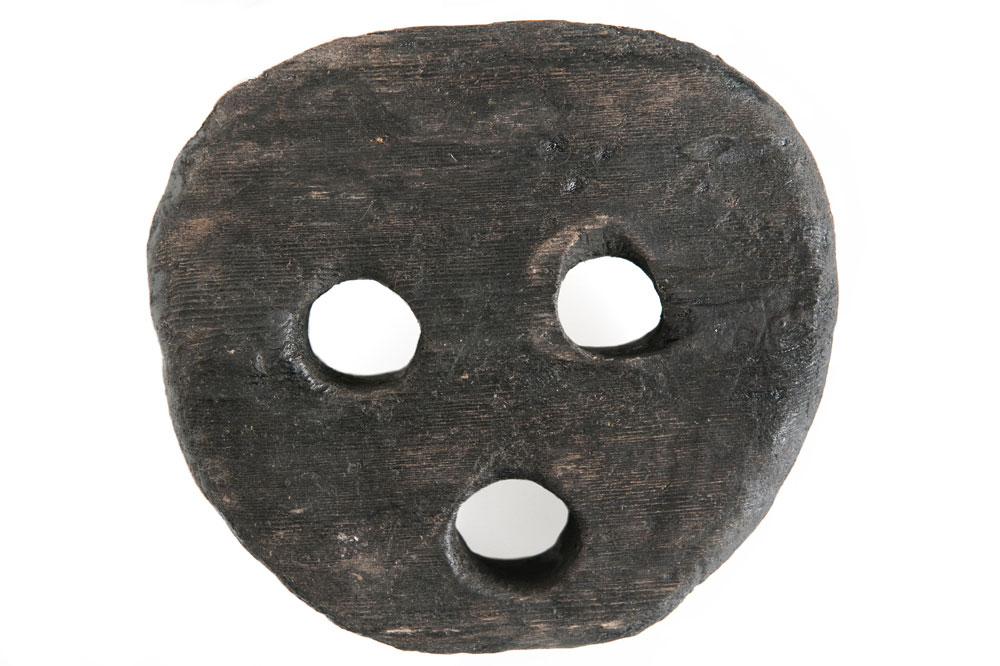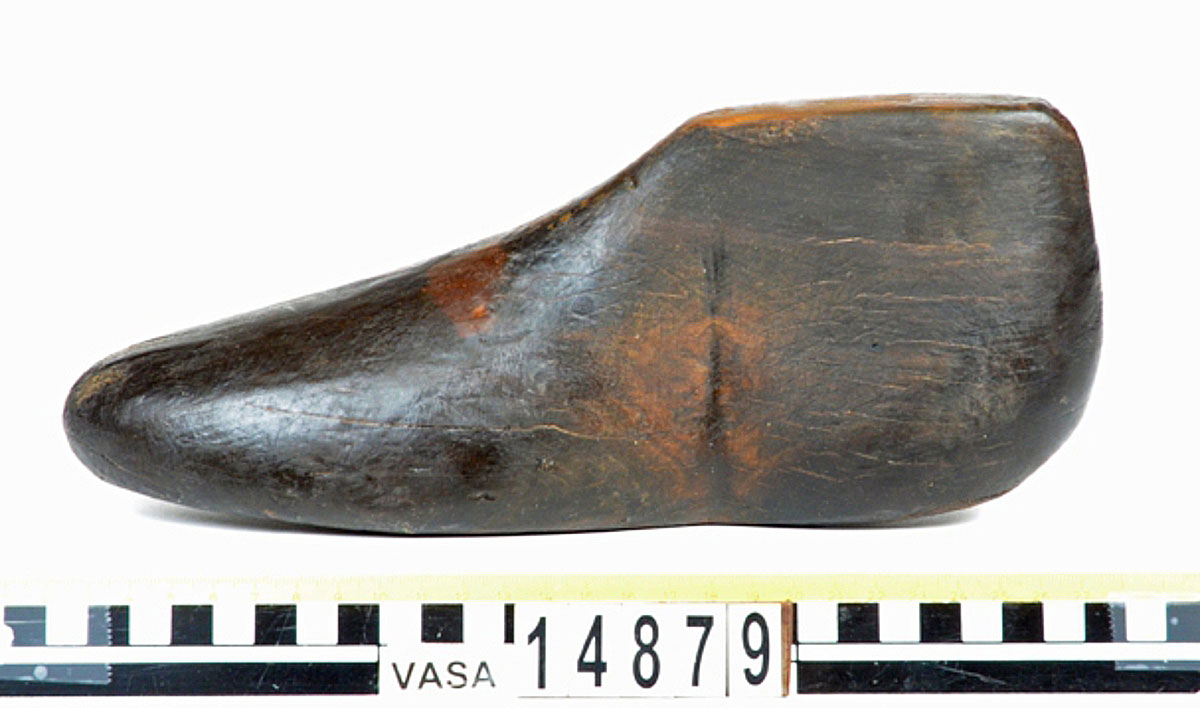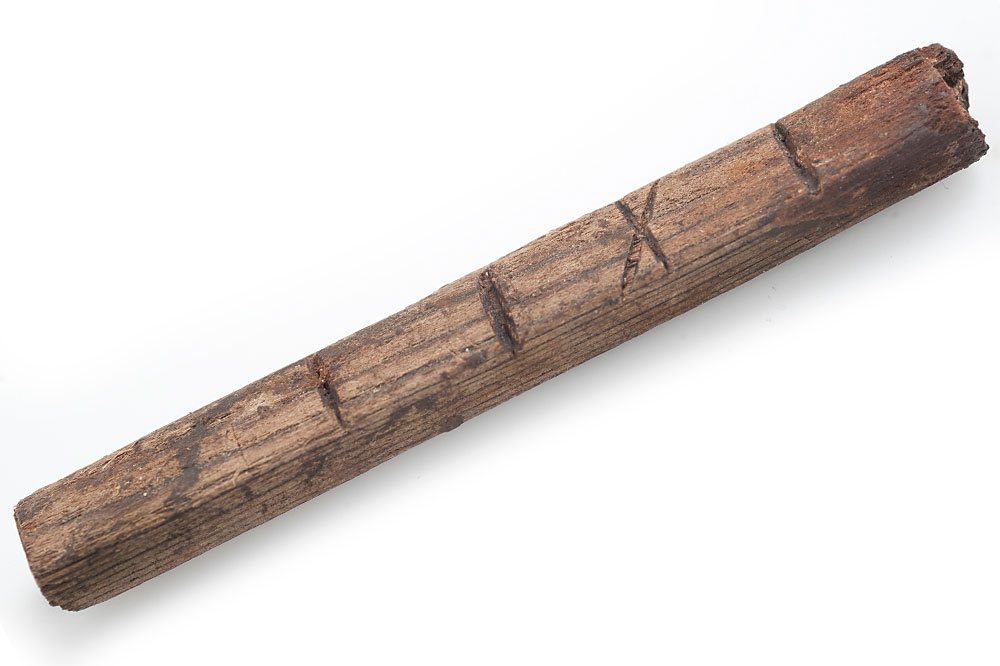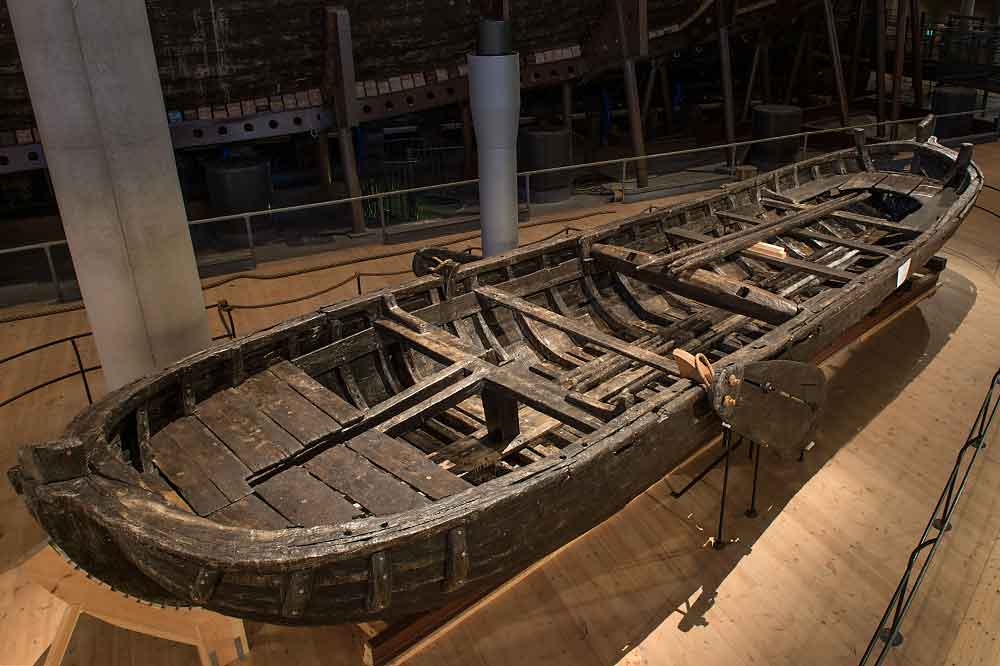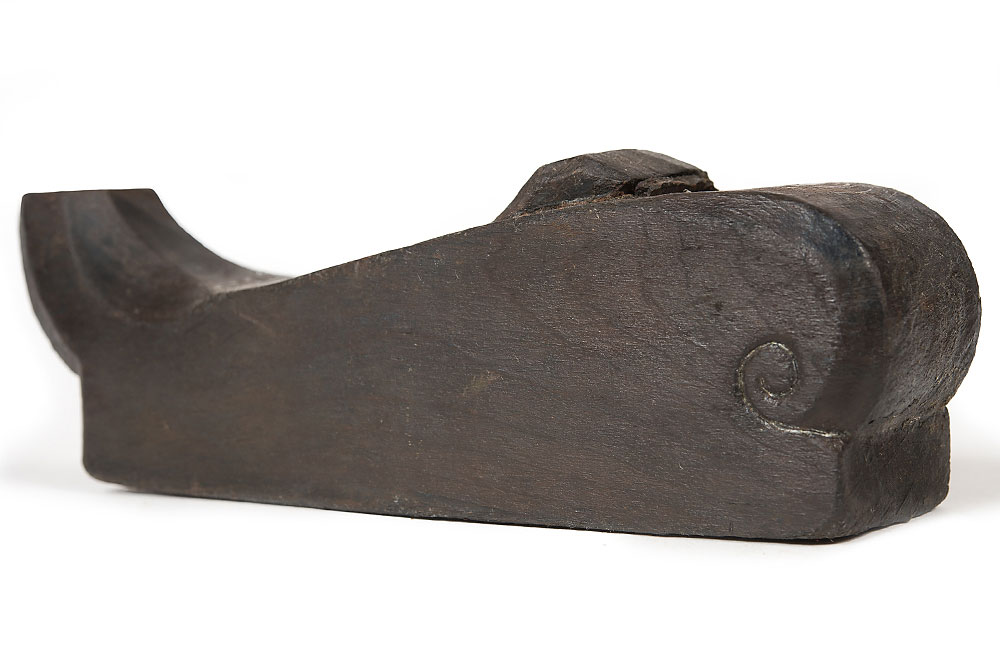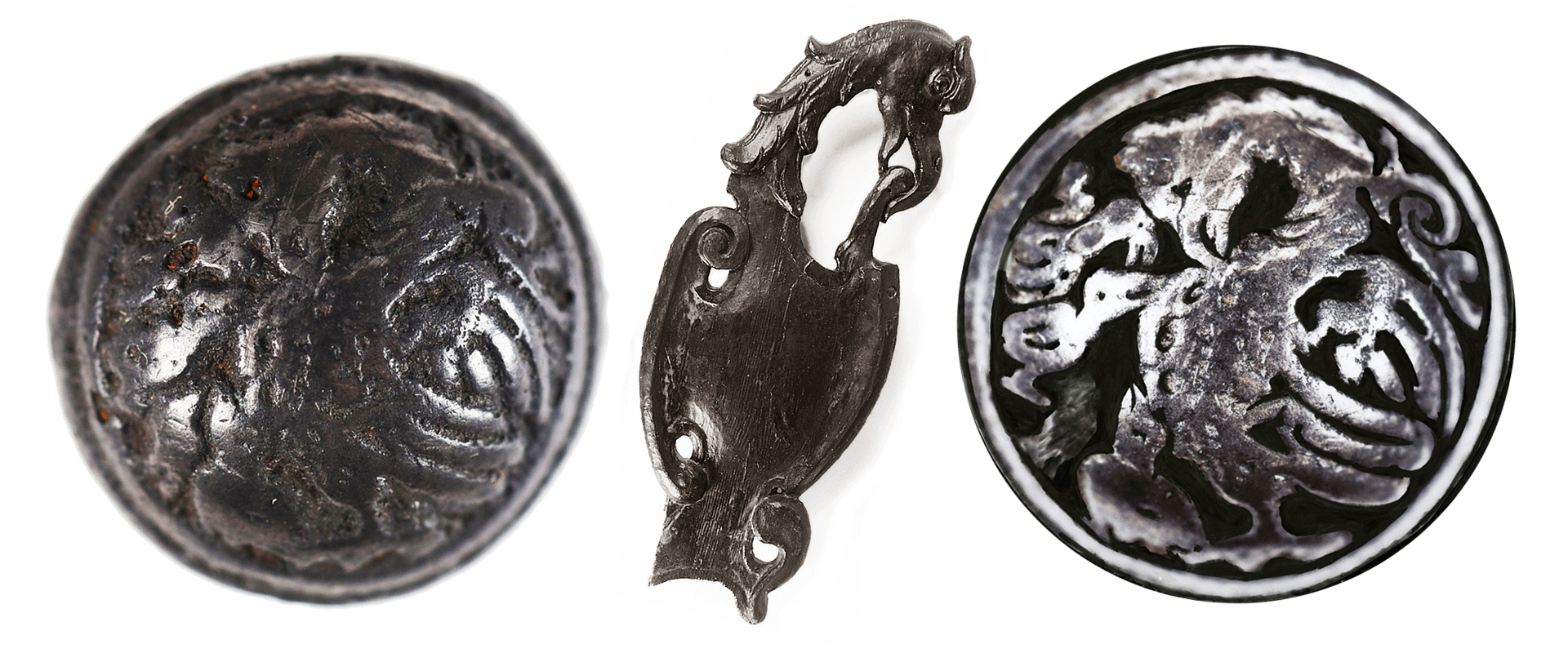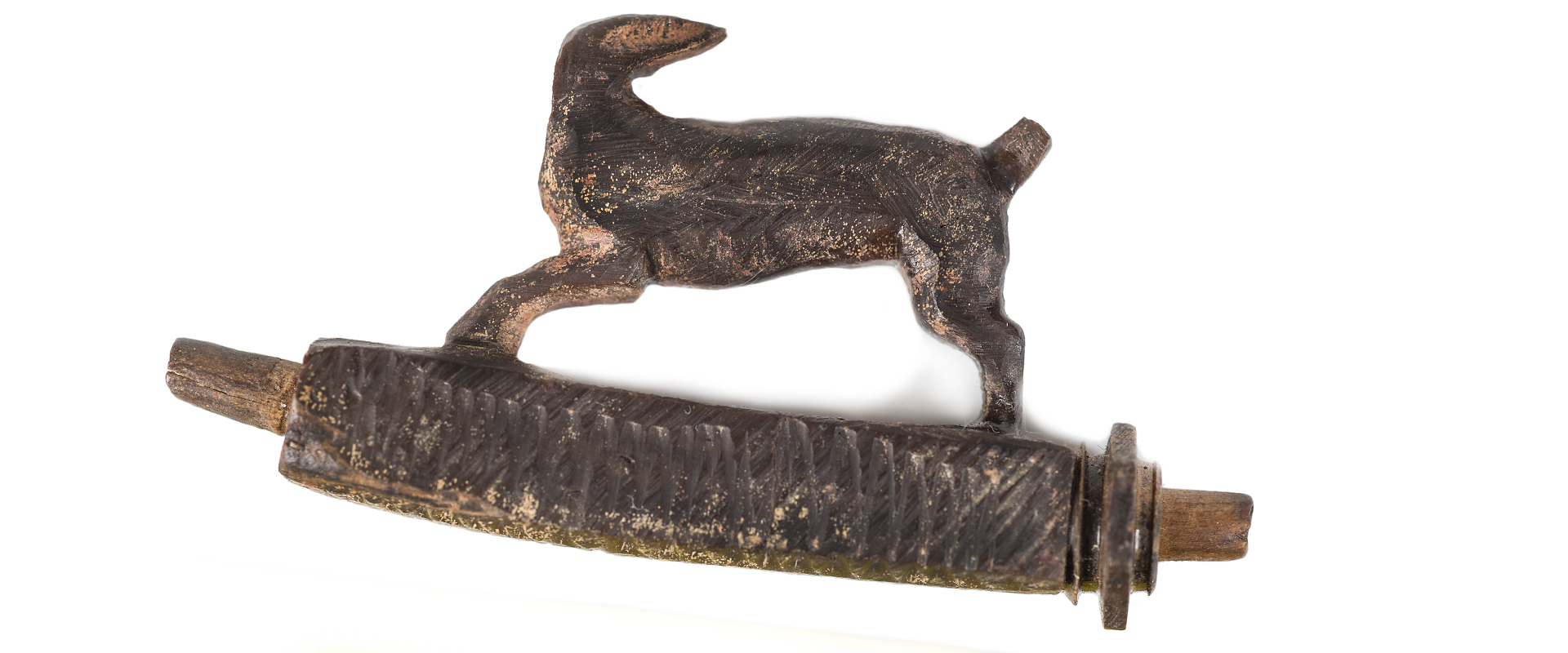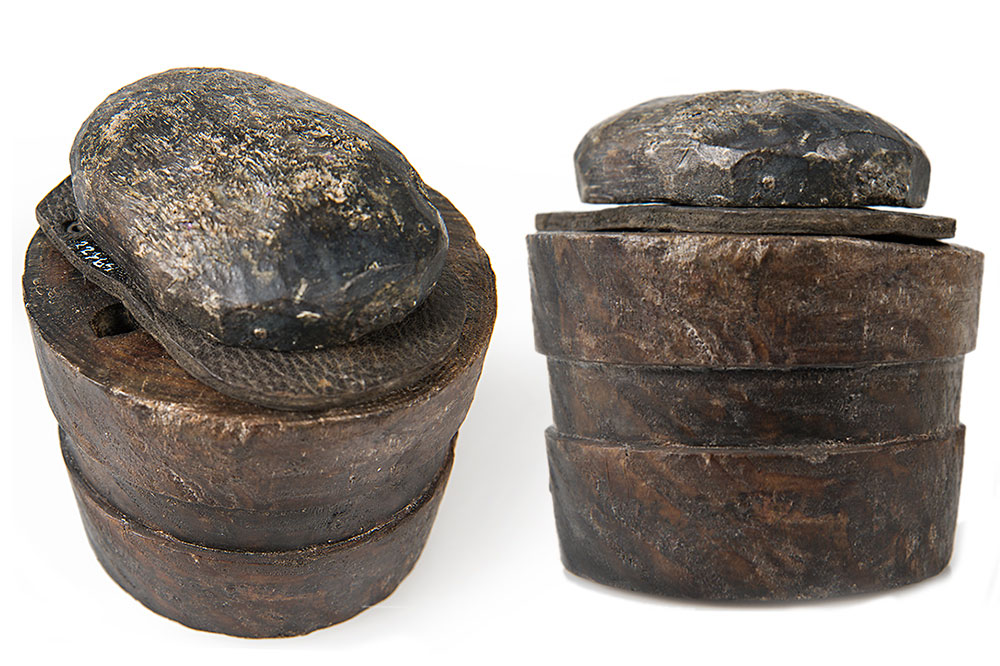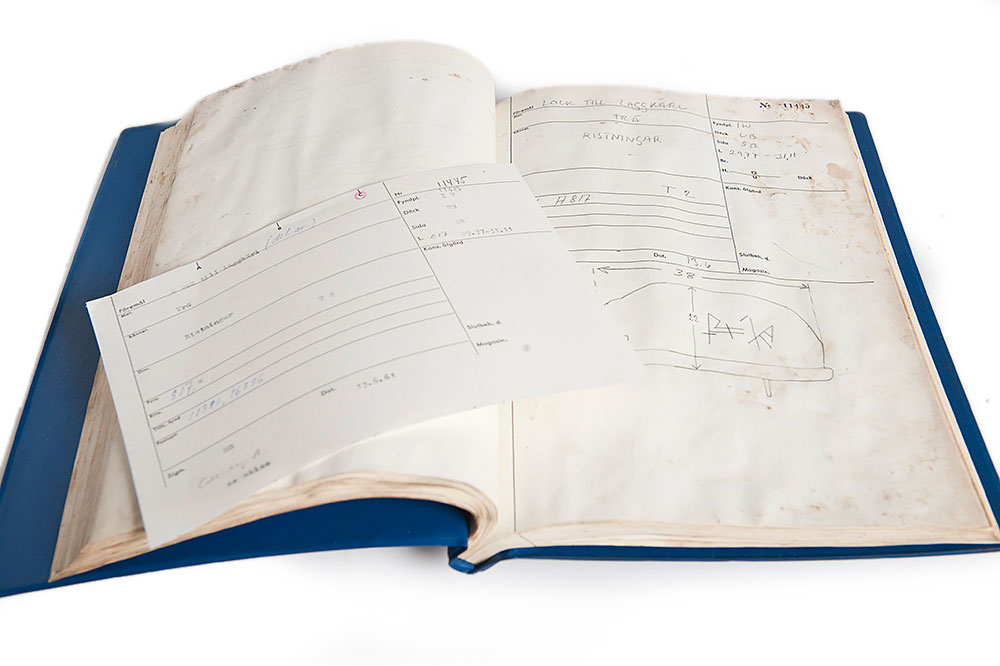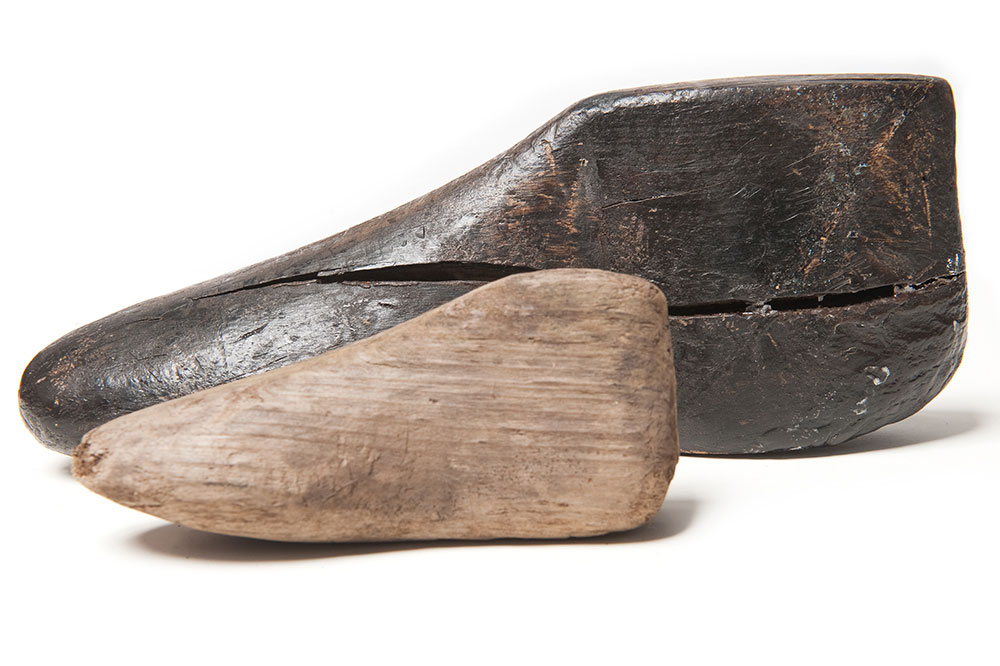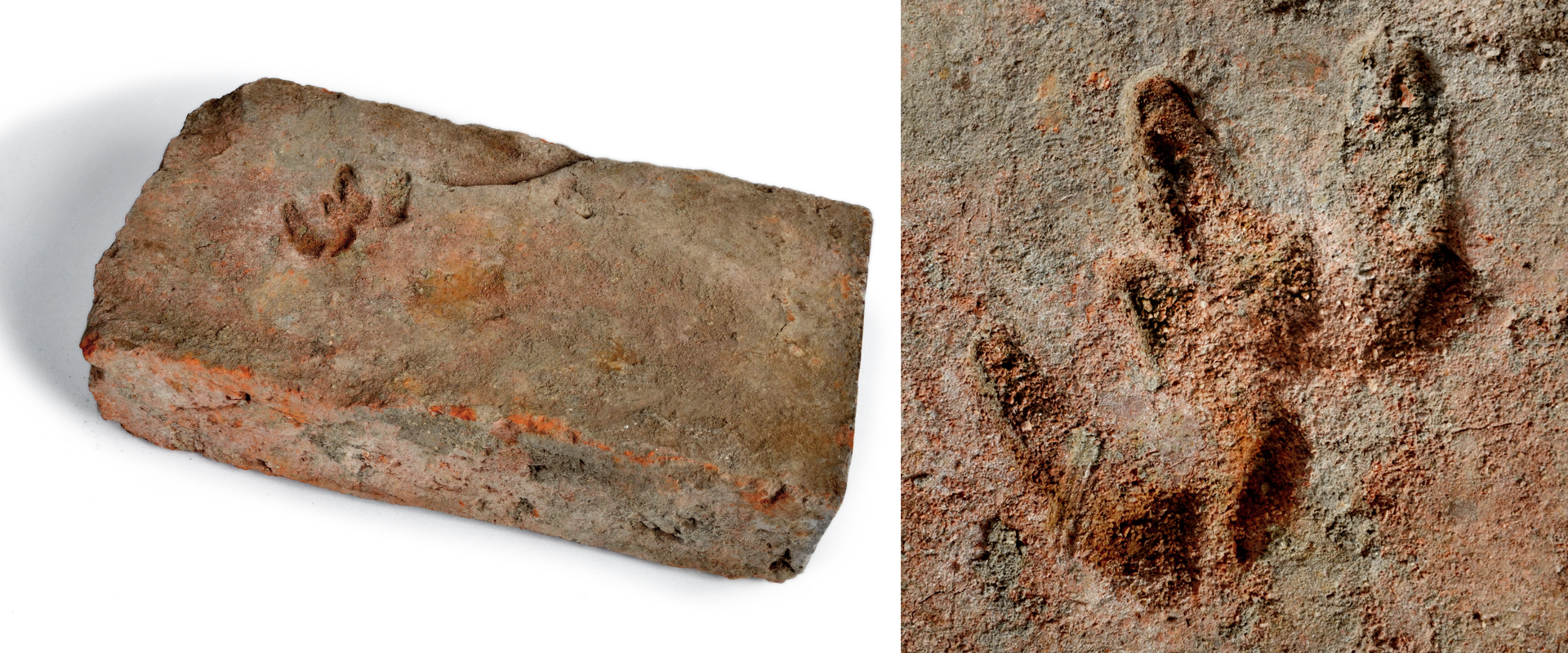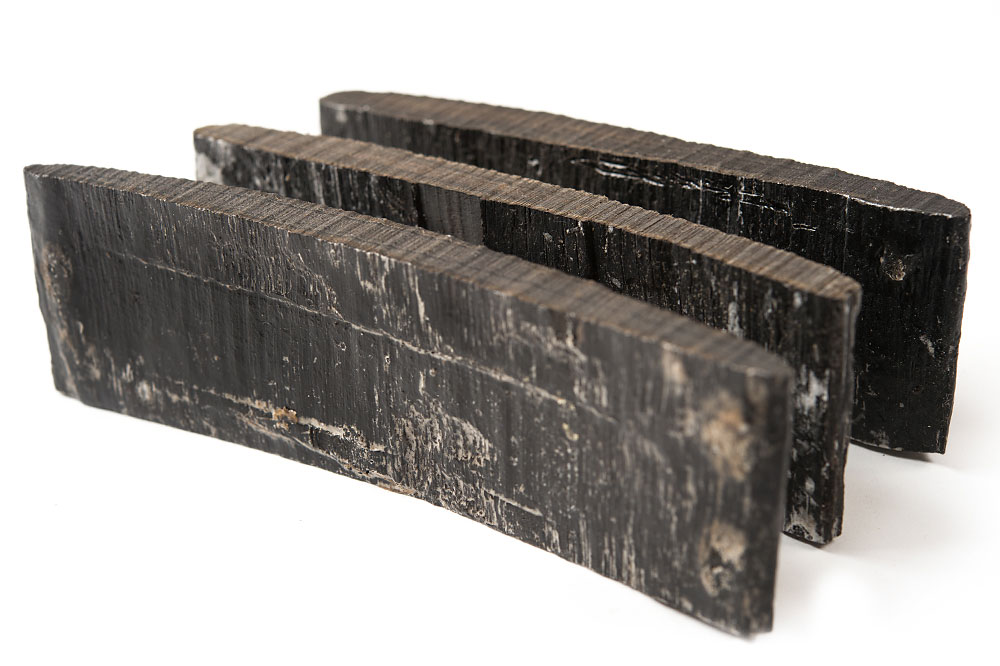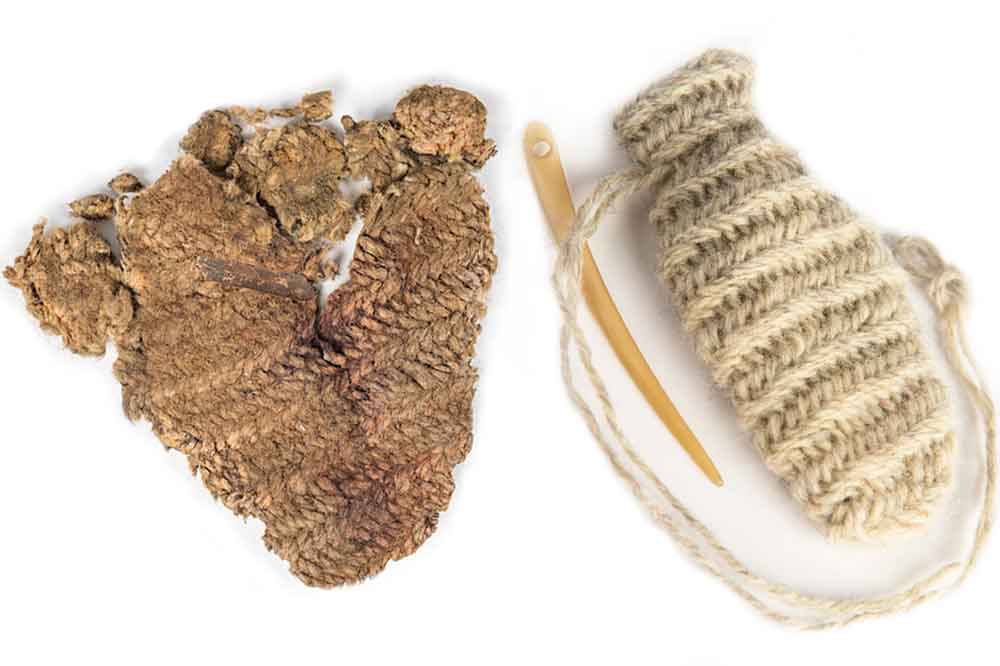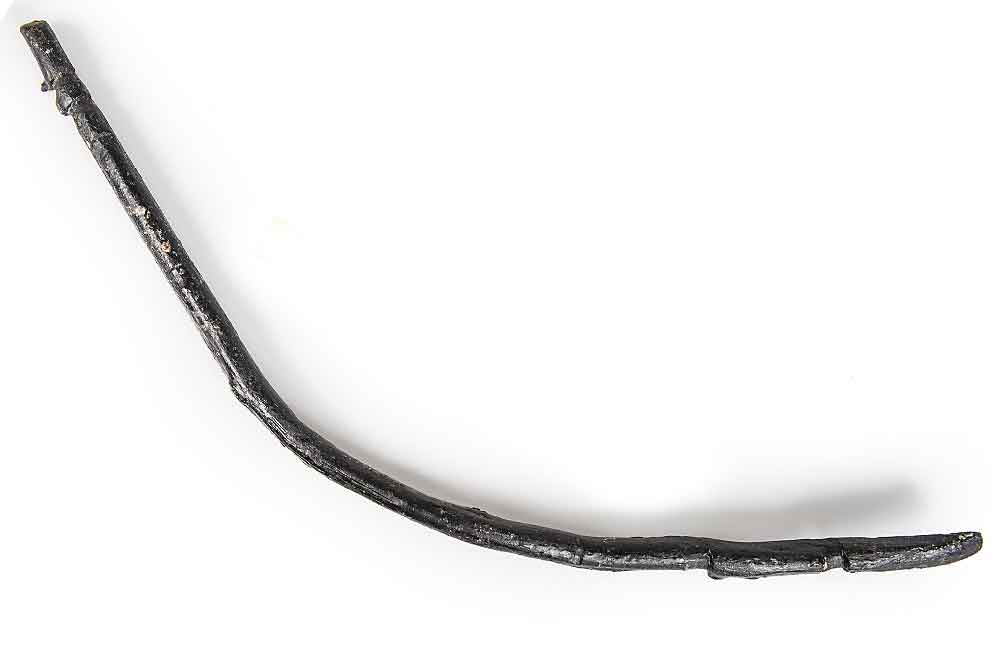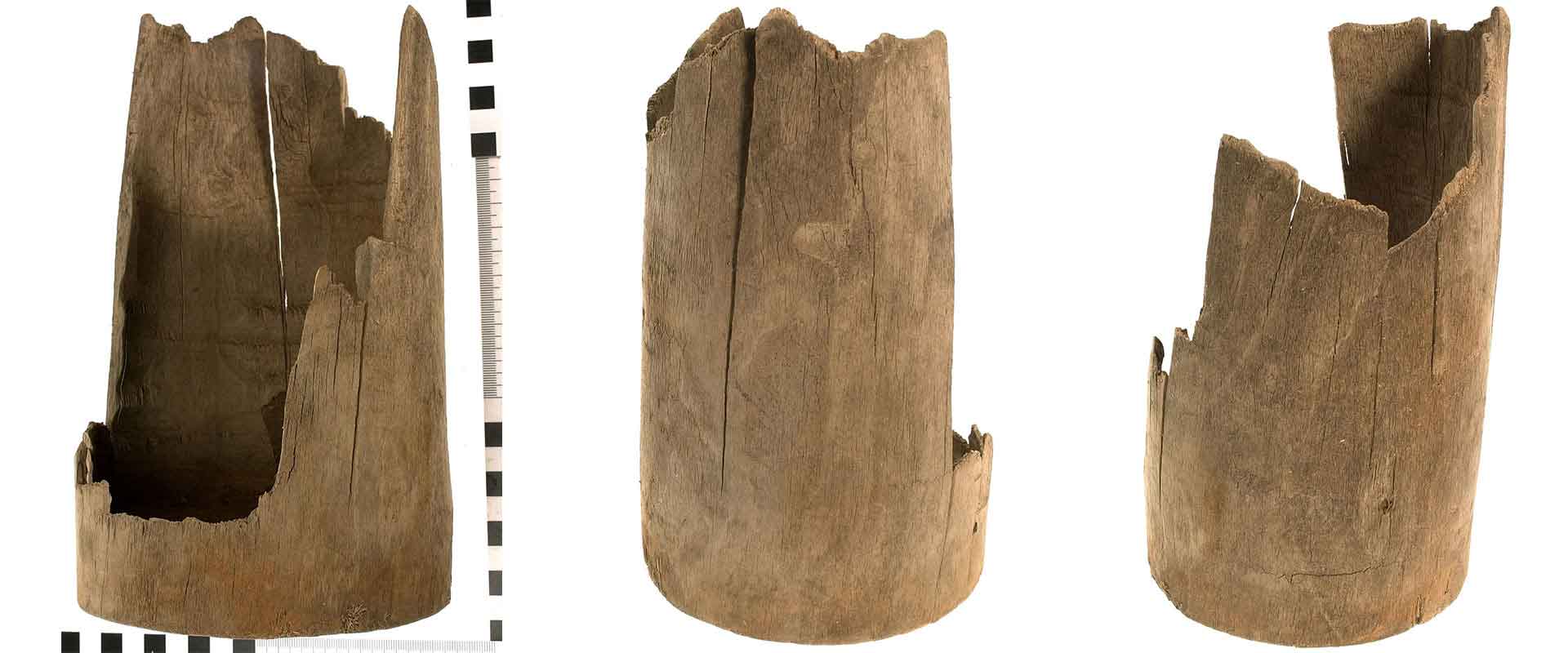A deadeye is a part of a vessel’s rig. On board Vasa, deadeyes were used in three different areas. All of Vasa’s deadeyes are made of wood but they have different forms according to where they were used in the rig.
The most common type of deadeye is flat, with three holes and was used to tension the shrouds, the heavy lines which steadied the masts on each side. Each shroud had a deadeye at the lower end, which corresponded to a similar deadeye attached to the side of the ship. The two were connected with a rope called a lanyard, which was uses to tighten the assembly.
The stays, heavy lines running forward from the masts, were also tensioned with deadeyes. These are much larger and rectangular in form, with four or six hole.
The third type of deadeye on Vasa was a two-holed version attached to an eye in the end of the parrel, which tied a yard to the mast. The loose ends of the parrel rope passed through the deadeye and then down to the deck, making it possible to tighten or slacken the parrel from the deck, so that the yard could be more easily maneuvered. It was especially important for the mizzen yard, which had to be shifted from one side of the mast to the other when tacking the ship.
